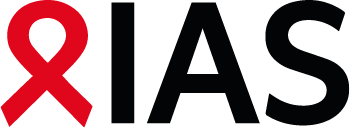Share Abstract
Access to HCV triple therapy with telaprevir or boceprevir in real-life setting in HIV-HCV co-infected patients - ANRS CO13 Hepavih Cohort (France)
Abstract Content:
Background: Data concerning the use of HCV direct-acting protease inhibitors (PI) in HIV/HCV co-infected patients in a real life setting are scarce. Access to therapy and early use were evaluated in a prospective French cohort of HIV/HCV co-infected patients.
Methods: Data of HCV genotype 1/HIV co-infected patients, followed-up from 01/2011 to 02/2013 were analysed. The rate of tritherapy uptake with telaprevir (TPV), boceprevir (BOC) or other PI + Peg-IFN-Ribavirin was estimated among patients who respected criteria for tritherapy initiation. Rapid virological response (RVR) and extended RVR (eRVR) were defined as an HCV-RNA < 15UI/mL at week 4, and at weeks 4 and 12 after PI initiation, respectively. A severe anemia was defined as Hb < 9 g/dL or a 4.5 g/dL decrease.
Results: Among 300 eligible patients, 93 (31%) initiated tritherapy (TPV n=62, BOC n=23, other n=8), among whom 31 in clinical trials. 24% of them were naïve for anti-HCV treatment, 13% were relapsers and 63% non-responders. Median HCV-RNA at treatment initiation was 6.0 log10 and 44% were cirrhotic. Median CD4 cell count was 593/mm3 and 93% had undetectable HIV RNA. All patients were under ART.At least one contra-indication to treatment initiation was reported in 34% of non-treated patients: psychiatric disorders (9.9%), current active IV drug use (7.9%), cardiovascular diseases (4.3%), thrombocytopenia < 50 000/mm3 (2.6%), CD4< 100/mm3 (2.6%), decompensated cirrhosis or hepatocellular carcinoma (2.5%), excessive alcohol consumption (>5 units/d) (2.1%), anemia < 10 g/dl (1.3%), renal impairment (creatinine >200 mmol/l) (1.2%). Among treated patients with a follow-up >1 month, a RVR occurred in 65% for TPV and 27% for BOC and an eRVR in 63% of TPV and 14% of BOC treated patients. By W4, severe anemia was observed in 24% of patients (28% for telaprevir and 10% for boceprevir) and rashes were reported in 8% of TPV treated patients.
Conclusions: More than 34% of HCV genotype 1- HIV co-infected patients included in this French cohort initiated an anti-HCV tritherapy under real-life settings with a high rate of RVR. However, the frequency of anemia underlines the need of an intensive monitoring in this population.
Keywords: hepatitis C, telaprevir, boceprevir, HIV HCV co-infection
Methods: Data of HCV genotype 1/HIV co-infected patients, followed-up from 01/2011 to 02/2013 were analysed. The rate of tritherapy uptake with telaprevir (TPV), boceprevir (BOC) or other PI + Peg-IFN-Ribavirin was estimated among patients who respected criteria for tritherapy initiation. Rapid virological response (RVR) and extended RVR (eRVR) were defined as an HCV-RNA < 15UI/mL at week 4, and at weeks 4 and 12 after PI initiation, respectively. A severe anemia was defined as Hb < 9 g/dL or a 4.5 g/dL decrease.
Results: Among 300 eligible patients, 93 (31%) initiated tritherapy (TPV n=62, BOC n=23, other n=8), among whom 31 in clinical trials. 24% of them were naïve for anti-HCV treatment, 13% were relapsers and 63% non-responders. Median HCV-RNA at treatment initiation was 6.0 log10 and 44% were cirrhotic. Median CD4 cell count was 593/mm3 and 93% had undetectable HIV RNA. All patients were under ART.At least one contra-indication to treatment initiation was reported in 34% of non-treated patients: psychiatric disorders (9.9%), current active IV drug use (7.9%), cardiovascular diseases (4.3%), thrombocytopenia < 50 000/mm3 (2.6%), CD4< 100/mm3 (2.6%), decompensated cirrhosis or hepatocellular carcinoma (2.5%), excessive alcohol consumption (>5 units/d) (2.1%), anemia < 10 g/dl (1.3%), renal impairment (creatinine >200 mmol/l) (1.2%). Among treated patients with a follow-up >1 month, a RVR occurred in 65% for TPV and 27% for BOC and an eRVR in 63% of TPV and 14% of BOC treated patients. By W4, severe anemia was observed in 24% of patients (28% for telaprevir and 10% for boceprevir) and rashes were reported in 8% of TPV treated patients.
Conclusions: More than 34% of HCV genotype 1- HIV co-infected patients included in this French cohort initiated an anti-HCV tritherapy under real-life settings with a high rate of RVR. However, the frequency of anemia underlines the need of an intensive monitoring in this population.
Keywords: hepatitis C, telaprevir, boceprevir, HIV HCV co-infection
